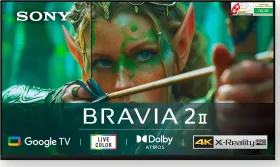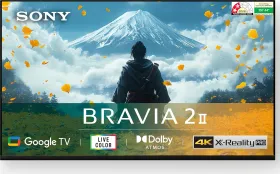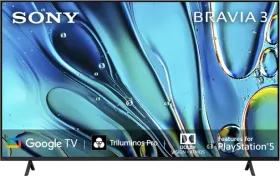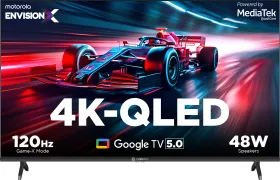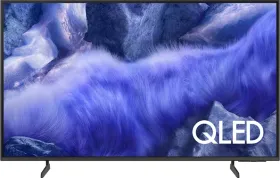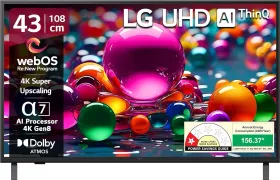The entertainment habits of Indian households are undergoing a massive reset. While streaming giants like Netflix, Amazon Prime Video, and Disney+ Hotstar race ahead with tailored content and mobile-first strategies, the idea of the “big screen” is shifting from the multiplex to the living room.
The numbers tell their own story. India’s OTT market is projected to surge from $4.5 billion in 2024 to a staggering $27.2 billion by 2033. Content consumption is booming, regional content is driving subscriptions, and going to cinemas, while not dead, is evolving into an occasional event reserved for larger-than-life spectacles. This new reality is redrawing the battle lines for attention. Sony’s latest move the introduction of a Bravia 5 98-inch TV in India, underscores the brand’s belief that Indian consumers are ready for an immersive, theatre-like experience at home.
We spoke with Ranvijay Singh, Head of BRAVIA Business at Sony India, to unpack the company’s move into ultra-large-format TVs, how AI is reshaping the viewing experience, and why he believes the living room is the new cinema hall.
Q. Sony has just entered the 98-inch category. What makes this the right time for such a bold move in India?
India’s home entertainment landscape is undergoing a notable shift. More people are looking for larger-than-life viewing experiences, especially with the surge of OTT consumption. The appetite for cinematic immersion is growing, and the living room has become the new movie theatre.
We’re also seeing a clear trend toward premium, large-format televisions — the demand for screens above 55 inches has skyrocketed. With the rise of Dolby Vision and Dolby Atmos content, and homes becoming smarter and more entertainment-centric, we felt this was the right time to bring the 98-inch BRAVIA to the Indian market.
Q. You’ve positioned this as a new benchmark in premium home entertainment. What sets it apart from other ultra-large TVs?
We’re going beyond just screen real estate. The 98-inch BRAVIA is engineered to deliver a completely immersive experience. It combines studio-calibrated visuals, cognitive intelligence, and theatre-like sound to create a truly cinematic environment.
At the core is our Cognitive Processor XR, which understands how the human brain perceives visuals and sound. So instead of raw specs, it’s about how motion, depth, contrast, and detail come together naturally. Dolby Vision and Dolby Atmos take the audio-visual experience to the next level, while Sony Pictures Core gives users access to premium, studio-quality films — it’s like having a private screening room at home.

Q. Who is your target audience for a television of this scale?
This product is designed for discerning customers who view televisions not just as display devices but as lifestyle statements. Whether it’s sports enthusiasts, cinema buffs, or gamers, our ideal customer is someone who wants to be fully immersed in content and appreciates both performance and aesthetics.
For many, the TV is now the centerpiece of the home. The 98-inch BRAVIA fits seamlessly into this narrative — it complements modern interiors while delivering scale, quality, and sophistication.
Q. Are Indian consumers becoming more informed and spec-conscious when choosing TVs?
Absolutely. Today’s buyers are far more tech-savvy. But they don’t just compare specifications — they evaluate how these features enhance their overall viewing experience.
Features like 4K/8K resolution, high refresh rates, and panel technologies matter more now because consumers understand how they impact clarity, motion handling, or even eye comfort during extended viewing. Gaming, binge-watching, and hybrid work-from-home scenarios have made TVs a more integral part of lifestyle, and buying decisions reflect that shift.
Q. We’ve seen a clear uptick in demand for TVs 55 inches and above. What’s driving this shift?
We see a growing desire among consumers to replicate theatre-like experiences at home. That means larger screens, better sound quality, and more immersive visuals.
From our side, we ensure that this isn’t just about scaling up — it’s about delivering better contrast, color accuracy, and audio performance at every size tier. BRAVIA continues to dominate the premium segment because we’ve managed to marry technology with design.
Q. What does the future of BRAVIA look like? Is it more about size, AI, sustainability, or something else?
The future is a combination of all three. Size will continue to matter, but intelligence and sustainability will drive long-term differentiation.
We’re investing in AI-driven personalization — features that adapt picture and sound settings based on the content or even user behavior. At the same time, we’re conscious of our environmental responsibility. From eco-packaging to energy-efficient panels, we’re incorporating sustainability into the BRAVIA roadmap.
Ultimately, we want our TVs to be more than devices — they should be intuitive, immersive, and responsible.
Q. AI is the buzzword in every tech segment. How is Sony embedding AI in its TV portfolio?
At Sony, we see AI as a way to make technology more human-centric. BRAVIA TVs already use AI for intelligent scene recognition, voice clarity optimization, and real-time picture enhancement. But we’re also exploring ambient intelligence — making TVs more responsive to their surroundings and integrated into the smart home ecosystem.
The idea is to make the experience intuitive — where the technology fades into the background and the content takes center stage.
Q. Finally, as Indian homes get smarter, how is Sony keeping pace?
Our approach has always been about designing for lifestyle. That means ensuring BRAVIA TVs are not just compatible with connected ecosystems, but actually enhance them. Whether it’s integration with voice assistants, smarter UX, or aesthetic design that blends with contemporary interiors — we’re thinking about the complete experience.
In the end, we don’t want TVs to just sit in a corner. We want them to be an active part of your living space — both visually and functionally.
You can follow Smartprix on Twitter, Facebook, Instagram, and Google News. Visit smartprix.com for the latest tech and auto news, reviews, and guides.















